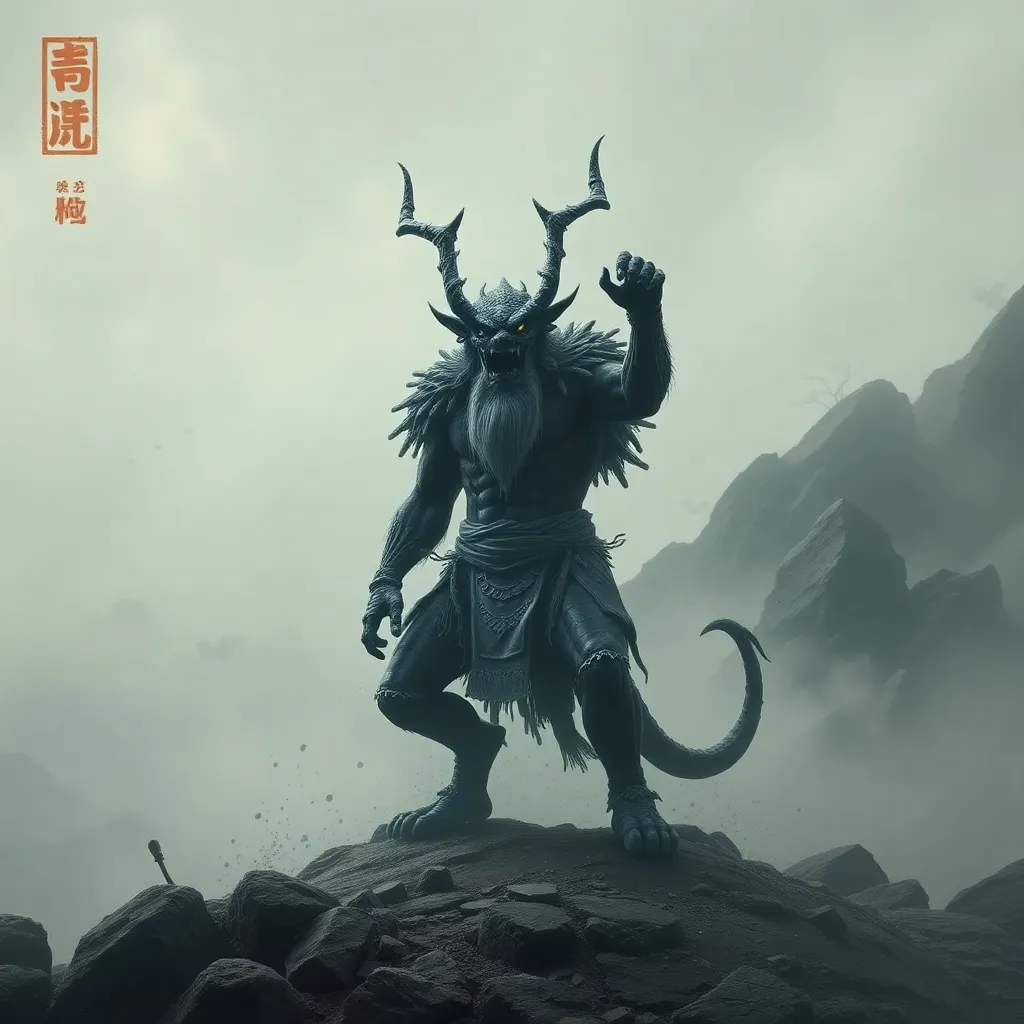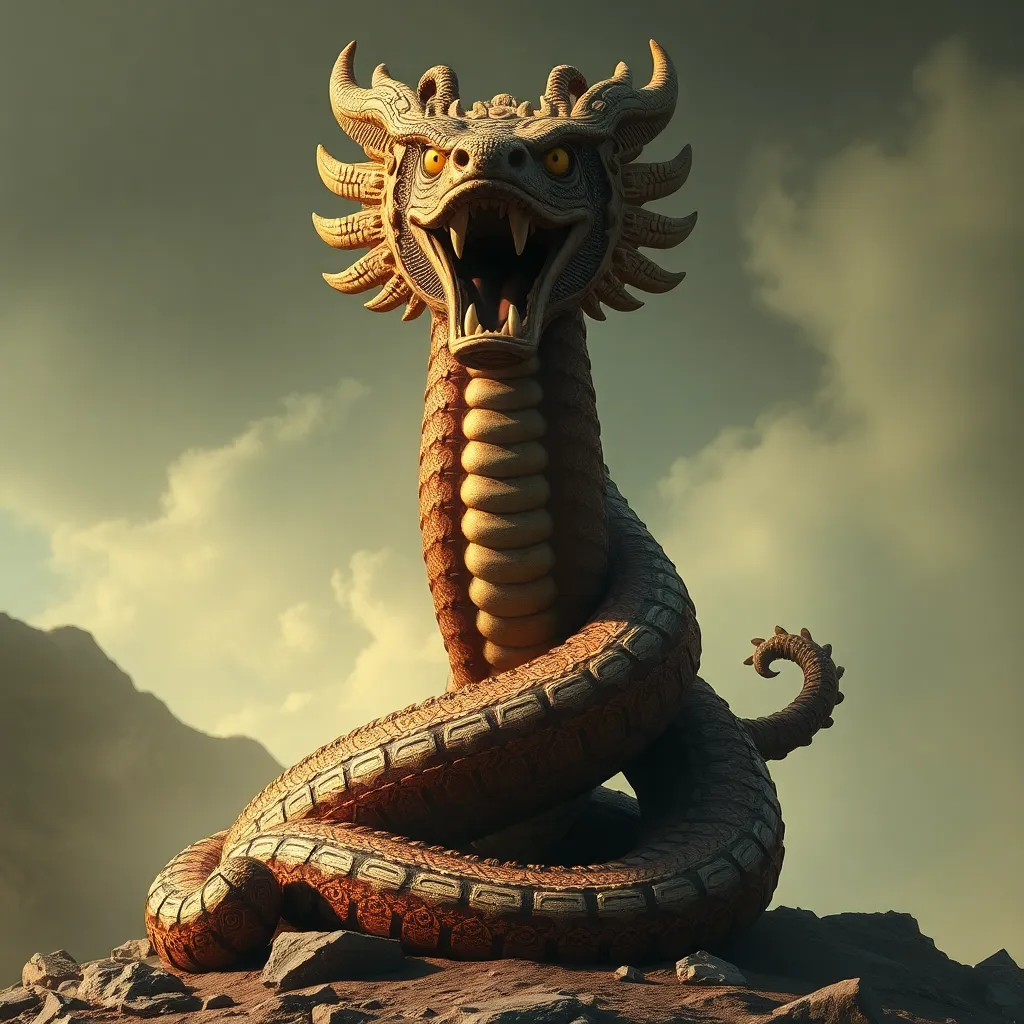The Demon of the North: Unraveling the Tales of the Oni in Ancient China
I. Introduction
The Oni is a prominent figure in Chinese folklore, often depicted as a demon or spirit that embodies both fear and fascination. These supernatural beings are characterized by their fearsome appearance and complex nature, and they have played a significant role in the cultural narrative of ancient China. The significance of the Oni in ancient Chinese culture extends beyond mere superstition; they reflect the societal values, fears, and beliefs of the time.
The purpose of this article is to explore the historical context, characteristics, notable tales, religious significance, artistic representations, and contemporary legacy of the Oni in Chinese folklore. By delving into these aspects, we can gain a deeper understanding of the cultural and historical significance of these enigmatic figures.
II. Historical Context of Oni in Ancient China
The Oni mythos has deep roots in Chinese history, with origins that can be traced back to ancient times. It is believed that the concept of Oni was influenced by various factors, including local beliefs, historical events, and interactions with neighboring cultures.
- Origins of the Oni mythos: The earliest references to demon-like entities can be found in texts from the Zhou Dynasty, where these beings were often associated with misfortune and chaos.
- Influence of neighboring cultures: The cultural exchanges with Japan and Korea contributed to the evolution of the Oni narrative, as these regions adopted and adapted similar mythological concepts.
- Evolution through dynasties: As dynasties changed, so too did the portrayal of the Oni. For instance, during the Tang Dynasty, Oni began to be depicted as more complex characters, reflecting the philosophical ideas of the time.
III. Characteristics and Symbolism of the Oni
The Oni is often described with distinct physical attributes that set them apart in folklore. These characteristics contribute to their symbolic meanings within the narrative framework.
- Physical attributes: Oni are typically portrayed as large, fearsome creatures with sharp claws, horns, and vibrant skin colors, often red or blue. Their terrifying appearance evokes both fear and awe.
- Symbolic meanings: The Oni symbolizes various concepts, including chaos, danger, and the unknown. They often represent the darker aspects of human nature, acting as a mirror to societal fears.
- Duality: Interestingly, the Oni embodies a duality in their nature. While they are often seen as harbingers of chaos and misfortune, they can also serve as protectors, warding off evil spirits and providing guidance in times of need.
IV. Notable Oni Tales and Legends
Throughout history, numerous tales and legends have featured the Oni, each contributing to the rich tapestry of Chinese folklore. These stories often reflect moral lessons and cultural values.
- Overview of prominent myths: One notable tale is that of “The Oni and the Bamboo Cutter,” which narrates the encounter between a bamboo cutter and an Oni, exploring themes of courage and understanding.
- Key figures: Characters such as the brave warrior or the wise sage frequently interact with the Oni, showcasing the struggle between good and evil, and the complexities of human nature.
- Moral lessons: Many Oni tales impart important lessons, such as the consequences of greed, the value of compassion, and the importance of facing one’s fears.
V. The Oni’s Role in Ancient Chinese Religion and Beliefs
The Oni holds a significant place in traditional Chinese spirituality, often associated with various religious practices and beliefs.
- Place in spirituality: Oni are seen as intermediaries between the human world and the spirit realm, often invoked during rituals to appease or seek protection from malevolent forces.
- Rituals and practices: Various rituals involve offerings to the Oni, including food and symbolic items, aimed at ensuring harmony and warding off misfortune.
- Ancestor worship: In the context of ancestor worship, the Oni may be invoked to protect the spirits of deceased loved ones, ensuring they remain undisturbed in the afterlife.
VI. The Oni in Art and Literature
The depiction of Oni in ancient Chinese art and literature reflects their cultural significance and the evolution of their narrative over time.
- Depictions in art: Ancient Chinese art often portrays Oni in elaborate murals and sculptures, showcasing their frightening features and symbolic attributes.
- Influence on literature: Oni stories have inspired countless literary works, with authors incorporating these figures into their narratives to explore themes of morality, fear, and human nature.
- Modern adaptations: Today, Oni narratives continue to be preserved and adapted in various forms of media, including films, graphic novels, and video games, ensuring their relevance in contemporary culture.
VII. The Legacy of the Oni in Contemporary Culture
The Oni’s influence extends beyond ancient times, impacting modern Chinese storytelling and cultural identity.
- Influence on modern storytelling: Contemporary writers and filmmakers often draw upon the rich lore of the Oni, reinterpreting their stories to resonate with current audiences.
- Comparisons with other cultures: The concept of the Oni shares similarities with demon figures in other cultures, such as the Japanese Oni or the Western concept of demons, highlighting the universal nature of these mythological beings.
- Cultural identity: The Oni remains a vital part of Chinese heritage, symbolizing the enduring nature of folklore and its role in shaping cultural identity.
VIII. Conclusion
The Oni is a multifaceted figure in ancient Chinese folklore, embodying both fear and fascination. Their significance extends beyond mere superstition, reflecting the cultural values, fears, and lessons of ancient China. As we reflect on the enduring impact of Oni tales in modern society, it becomes clear that preserving folklore and cultural narratives is crucial for understanding our shared human experience.
In conclusion, the Oni serves as a powerful reminder of the complexities of human nature, the duality of good and evil, and the importance of storytelling in maintaining cultural identity and heritage.



